We’re back with another week of the PLV report. This series will use the PLV metrics to contextualize player performance, and this week we’ll use our PLV model (Nick’s primer on PLV from last year can be found here) to validate some early-season pitching performances. PLV allows us to dig into individual pitches as needed, or to analyze how a pitcher’s repertoire works holistically. When showing Pitch Type cards, there will also be a plvLocation+ score shown, which is modeled similarly to PLV, but only uses the end locations of the pitch (horizontal, vertical, and location within the specific hitter’s strike zone) as inputs. With that information, we also can make Hitter PLV metrics which adjust a hitter’s decisions and performance based on the quality of the pitches they’ve faced.
I’m feeling festive this week, so I’ll be looking at players who have charts that are predominantly red, white, or blue.
Note: PLV metrics listed are current through Tuesday, July 2nd.
We start with a bat speed darling. Ramos has one of the fastest swings in baseball, however you lkook at it. He’s been consistently 90th percentile or better at pure swing speed, while having a relatively short swing (less than 7 ft, which is ~85th percentile). So his bat goes very fast, and it gets up to speed in a hurry.
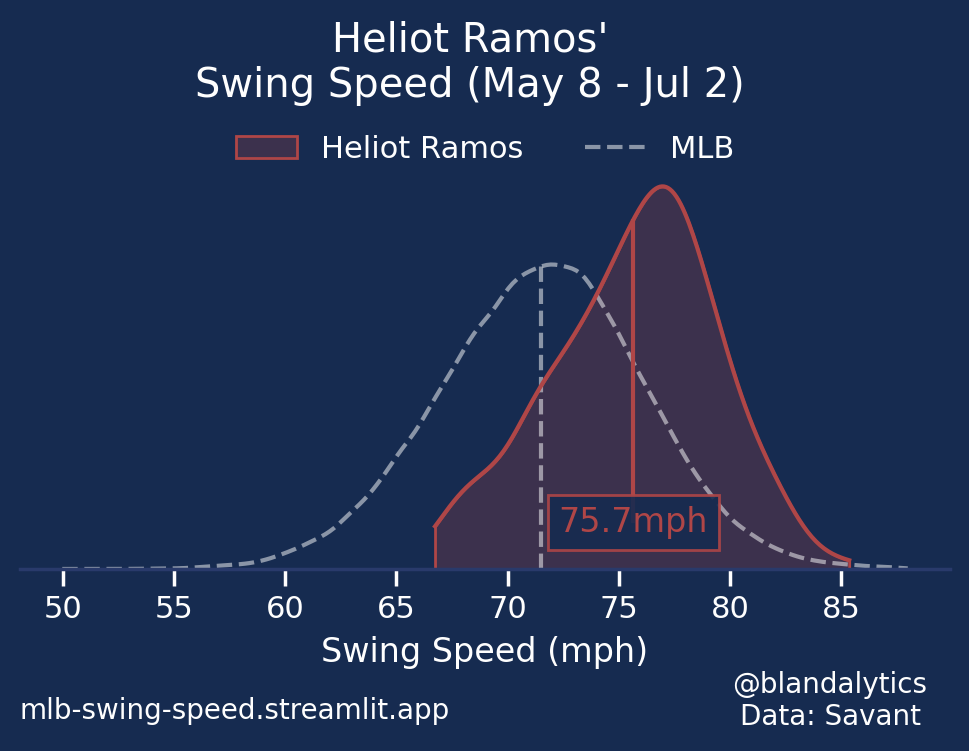
Luckily for him, this isn’t just some parlor trick. He converts that bat speed into game power: he’s been elite by our PLV Power metric, and that shows up in his results, too. That power has led to a 15.8% Barrel rate (96th percentile), 30.6% HR/FB rate (98th percentile), and a .384 wOBA (94th percentile, in spite of a below-average 26.7 K%).
His star had faded since his Top 100 prospect days (in 2021, he was #61 by Fangraphs and #81 by MLB), but he’s bounced back in a big way this season thanks to the fireworks show that happens whenever he swings his bat.
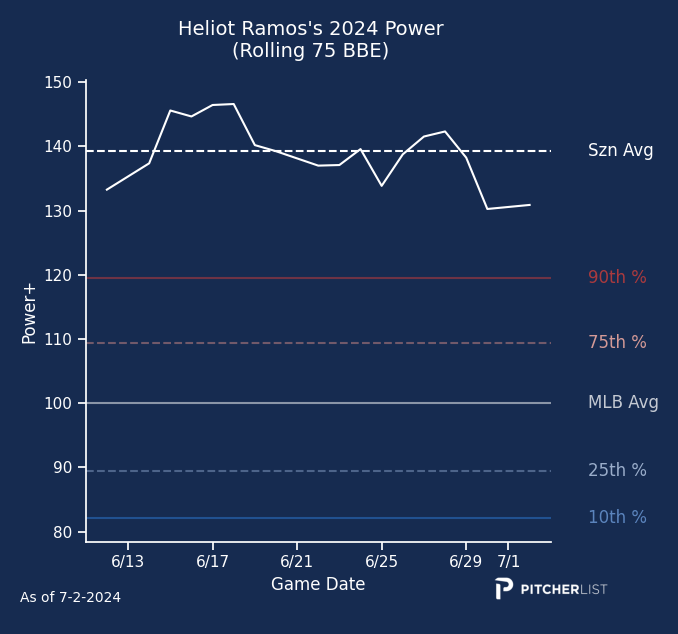
I love that we have ways to quantify the tools that players have (like swing speed and PLV Power), and Ramos is backing up his top-of-the-scale power tools with similarly impressive results.
Sánchez has been one of the bigger surprises of the season, vaulting from a pretty good pitcher (Nick ranked him 51st in his last preseason Top 100 List) to one who has returned elite results, which are backed up by PLV. The strikeouts will never wow you, but that’s not Sánchez’s game. He pairs good control with a repertoire that has been one of the best at suppressing batted ball quality this season, which can be seen by his 52.2% Str-ICR (74th percentile, even though he has a below-average Whiff%).

When I say that it’s his whole repertoire that suppresses batted ball quality, I mean it. It takes a village to run a minuscule 2.5 HR/FB%, with each of his three pitches doing their part.
The Changeup is his trademark pitch, and it has only allowed a .250 xwoBACON (80th percentile), without allowing a HR across 465 thrown. His Sinker has also not allowed a HR in an even larger 672 pitch sample while inducing ground balls at a 61% rate (69th percentile). The Slider also keeps things on the ground, allowing only one non-popup fly ball (sadly, that fly ball went for the single HR he’s allowed this season). Even his Cutter has chipped in, with a 100% GB% and a .049 wxoBACON (across… one batted ball).
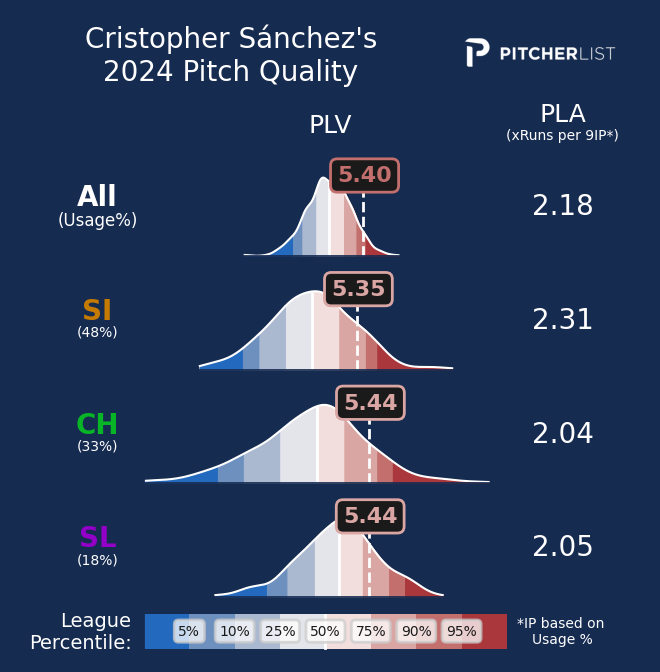
Put all of these pitches together, and you end up with a 99th percentile GB% (63%) and an 82nd percentile xwoBACON (.332). Sure, he’ll let in more hits than we’d like (.317 BABIP and .325 xBABIP), but those hits are only ever going for one base. It’s not a profile that will blow you away at first glance, but he’s absolutely someone who can run a very good ERA, win games, and earn quality starts.
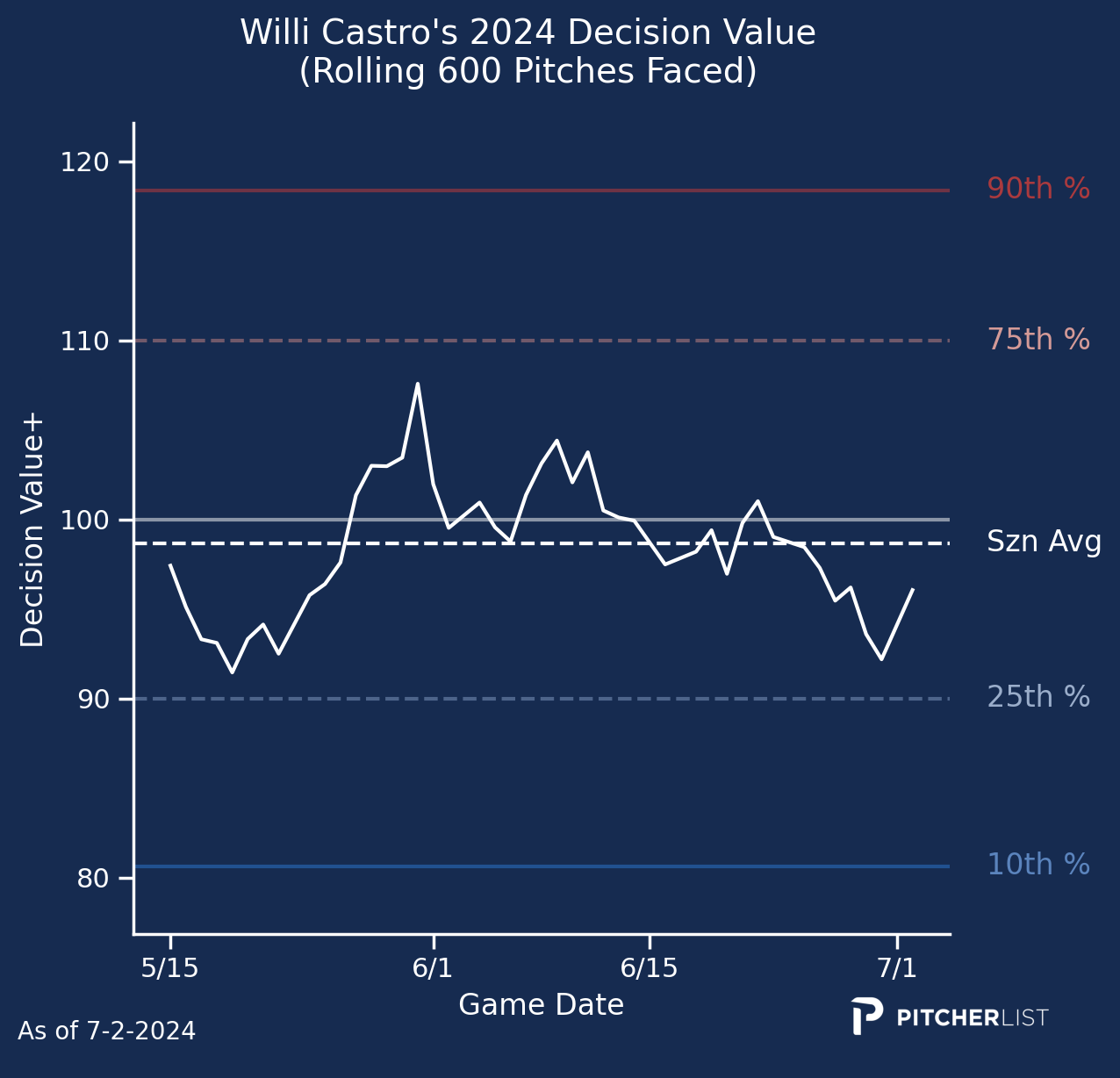
Contact Ability? Fried to a perfect golden brown.
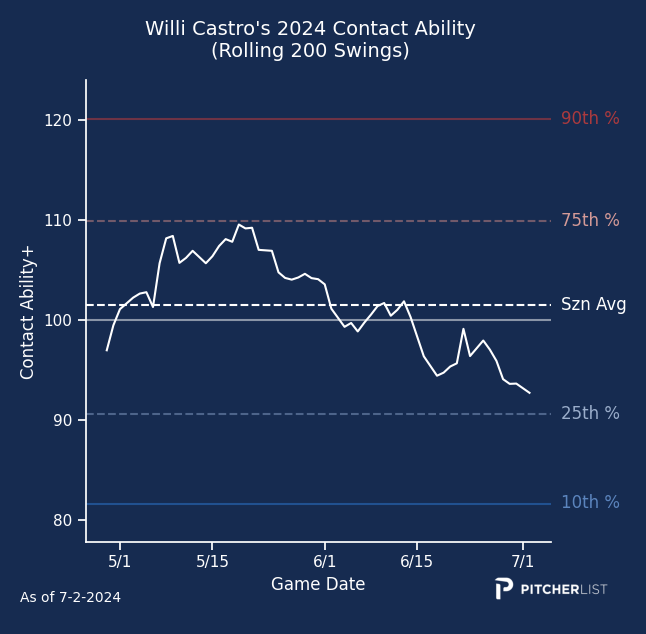
Power? 2.5 🔥 out of 5 on the spiciness scale.
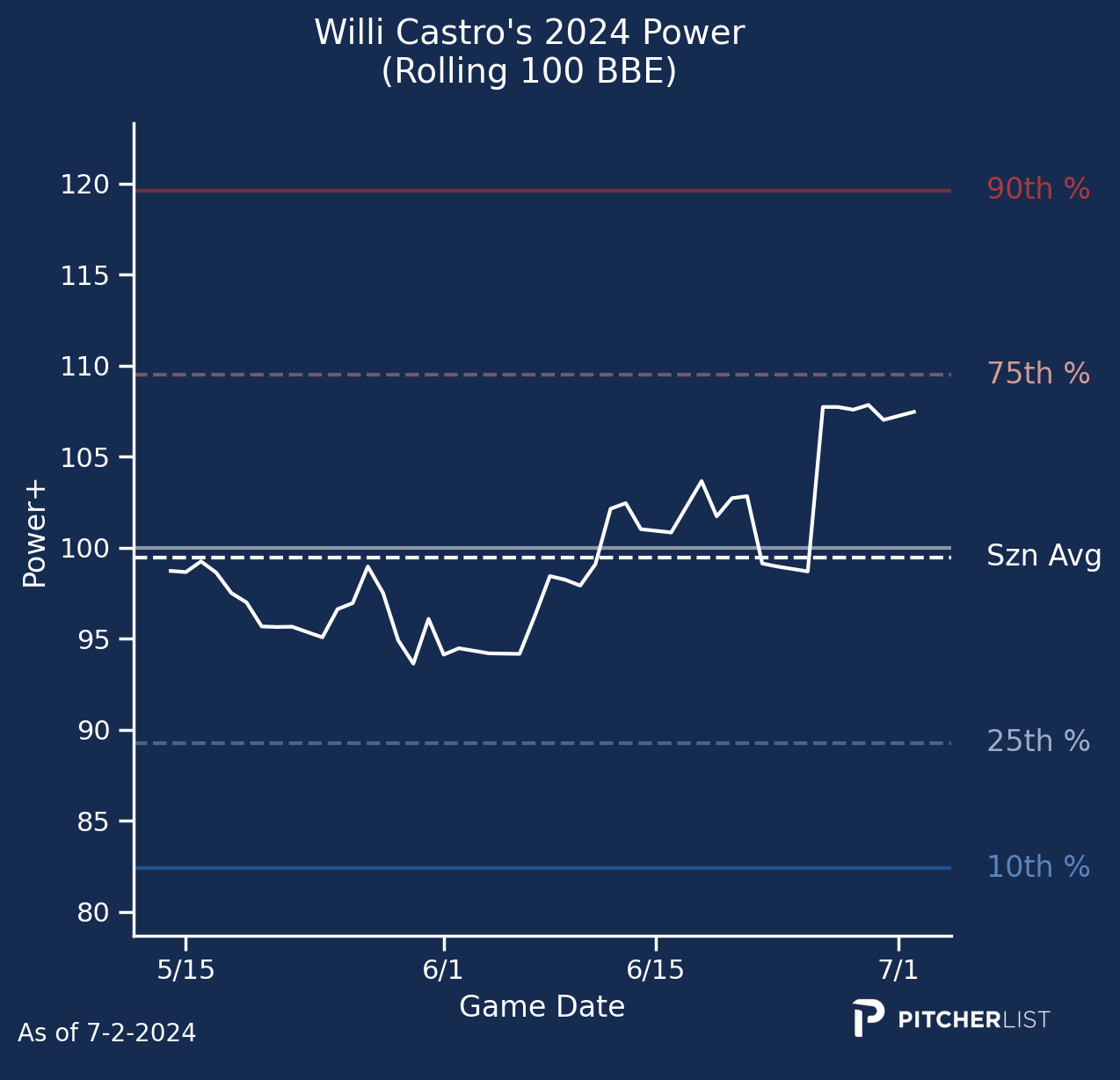
The best part of Castro is that these average skills play up when they’re given a lot of playing time (and when you can play serviceable-to-plus defense at multiple positions). His propensity for stealing bases is also another layer that can be added atop his solid foundation, which allows him to be much more than “Medium”.
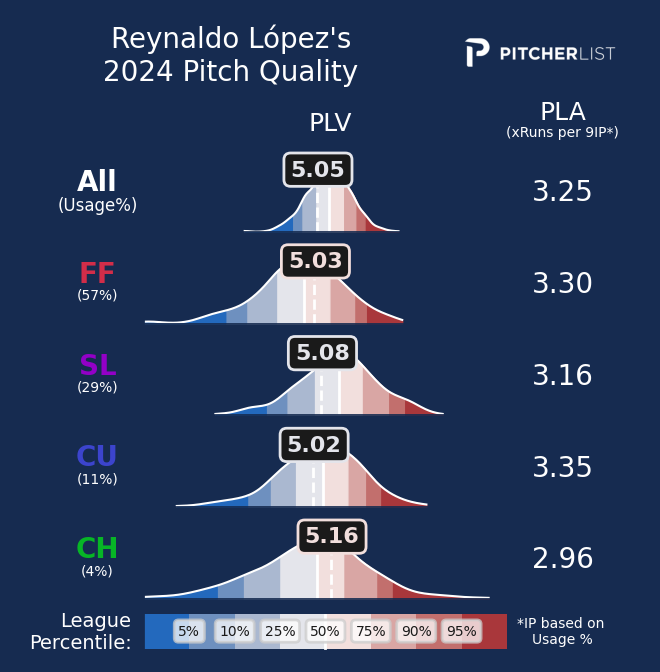
Eno Sarris has discussed at length the theory that adding average (or even bad!) pitches can improve a pitcher’s results. Essentially: a repertoire is greater than the quality of the individual pitches.
That seems like it’s been the case with López. He has enough pitches to keep a hitter guessing, and he’s willing to use each to end a plate appearance (4-Seam, Slider, and Changeup all have a 20+ Putaway Rate, which measures how often those pitches return a strikeout when used with 2 strikes). He could afford to throw his Changeup more often and might see additional benefits, but that’s nitpicking an outrageously successful return to starting for López.

The context here is that Arraez likely isn’t trying to swing fast. He prioritizes contact, and I’d argue he’s the best in baseball at that. He’s the best in our Contact Ability metric, nearly as far from the 90th percentile hitter as they are from the league average.
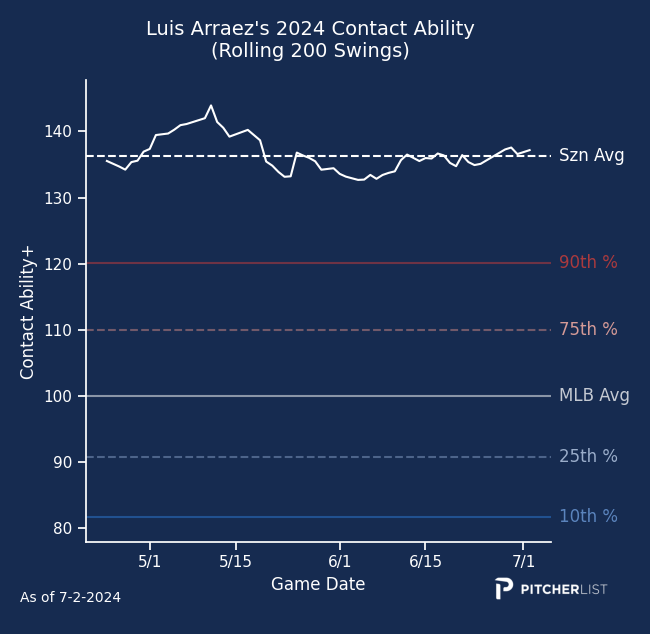
In addition to being incredible at making contact, his swing is also the best at converting its swing speed into exit velocity. MLB’s Squared Up metric measures what percent of the maximum possible exit velocity a hitter gets out of their swings, and Arraez leads the league in that, too.

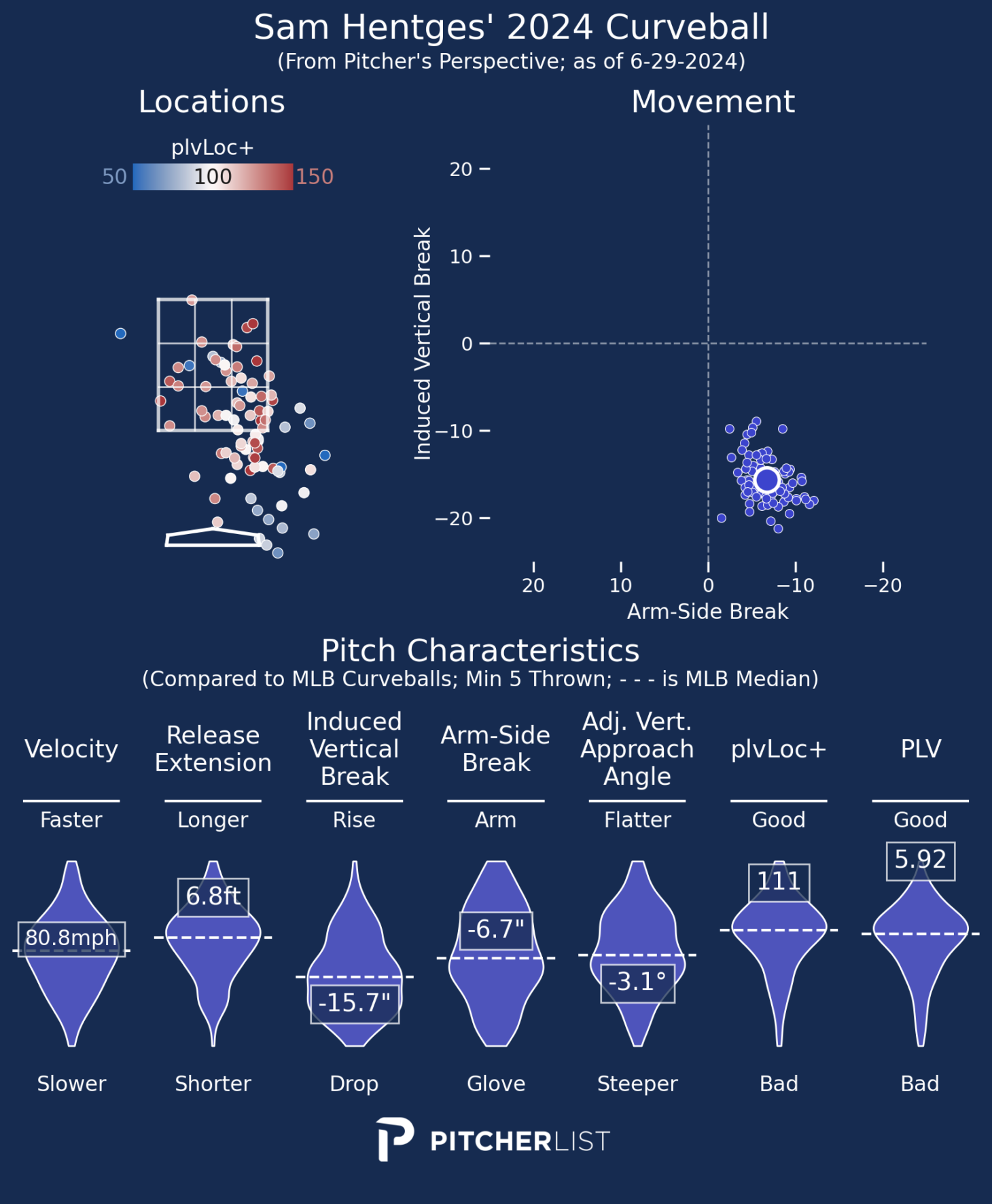
Hentges’ Curveball is the result of elite locations (86th percentile Strike% and a 111 plvLocation+) and great stuff (thanks to 6.8ft of extension, a 14.5 mph velo difference from his fastball, and 29+” of IVB difference from his fastball). The pitch is great at earning strikes (38.6% CSW; 86th percentile), which is especially valuable given how often he throws it in 2-strike counts (36.4% 2-Strike% and 31.3% Putaway Rate; 51st and 86th percentile, respectively).
Photo by Larry Placido/Icon Sportswire | Featured Image by Ethan Kaplan (@DJFreddie10 on Twitter and @EthanMKaplanImages on Instagram)




